Remaining Updated on March 11, 2023
These 8 almond pulp recipes are an unimaginable method to utilize this surprisingly versatile meals scrap! I’m sharing plenty of of my favorite almond recipes. It’s best to use almond pulp in savory dishes like crackers and vegan cheese spreads along with sweet dishes like protein bites and almond pulp cookies!
Whilst you make do-it-yourself almond milk, do you compost the leftover almond pulp? That’s formally your sign to stop and eat this ‘scrap’ in its place. Many people don’t know what to do with almond pulp, so that they merely compost it. Whereas that’s an unbelievable, zero waste method to utilize it, it’s moreover not completely utilizing this nutrient-dense nut. These almond pulp recipes are nearly greater than the almond milk that creates it, so make sure you high off in your almonds!
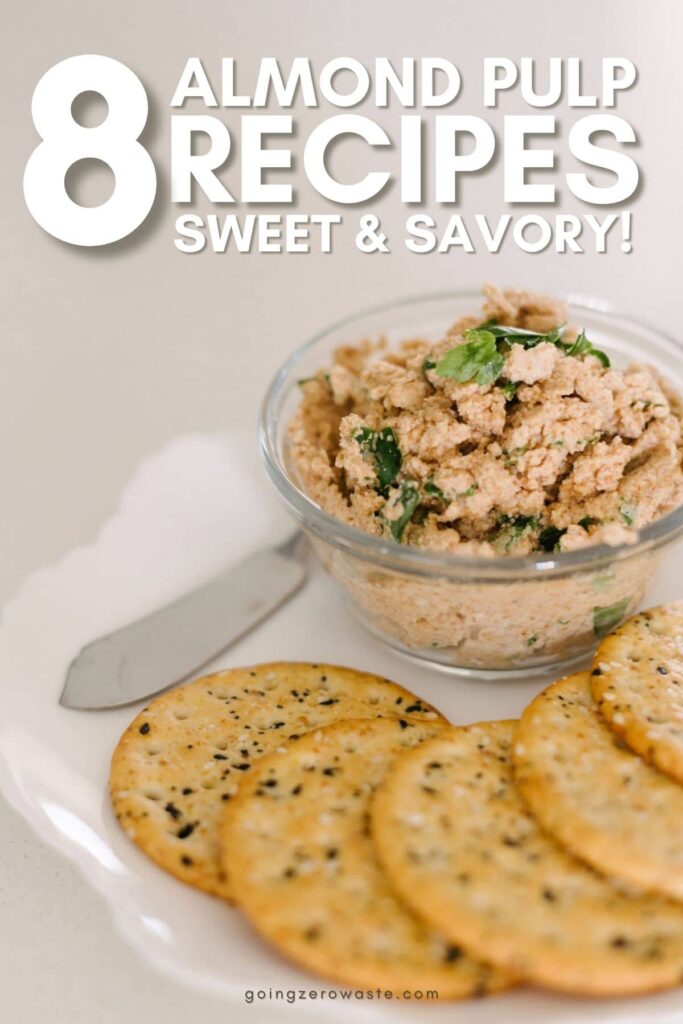

This put up was sponsored by the Almond Board of California. All concepts and opinions are my very personal. For further information, please see my disclosure protection.
almond pulp
Making your private almond milk is a simple strategy to reduce waste and decrease your bills. I like making do-it-yourself almond milk on account of it’s delicious and SO simple. Nevertheless, after you make it, you’re left with almond pulp — and when you may compost the almond pulp, it’s so considerably higher to reuse it!
I had completely the pleasure of speaking to Kiku Severson, a third know-how almond farmer, regarding the sustainability initiatives in almond farming. A few of the problems that piqued my curiosity have been their zero waste farming methods and the take care of water saving and water low cost on their farm.
(And, whereas I’m not going to enter the historic previous of almondsI’ll drop a hyperlink merely in case you’re a historic previous geek and love that kind of stuff… like me.)


zero waste almond orchards:
Almond bushes seize and retailer an enormous amount of carbon over their 25-year life cycle in a course of referred to as carbon sequestration. Almond farmers are pioneering climate-smart agriculture by the use of full orchard recycling.
On the end of the almond orchard’s lifecycle, full almond bushes are ground up and included once more into the soil. This extends that carbon sequestration by storing it inside the soil, serving to to deal with native climate change.
The almond farmers are completely zero waste on farm too! The almond has three components: the hull, shell, and kernel. We eat the kernels, nevertheless what regarding the hull and the shell? Being zero waste on farm means using every part of the almond tree, and there’s plenty of implausible pioneering on this space.
Traditionally, the hulls are used for livestock bedding and the shells are used for livestock feed. Nonetheless, almond hull and shell components are being researched for mushroom cultivation, strengthening recycled plastics, producing feed sources for poultry, soil amendments, supplemental winter meals sources for honey bees, and even for brewing beer! Not a single part of the almond tree goes to waste.
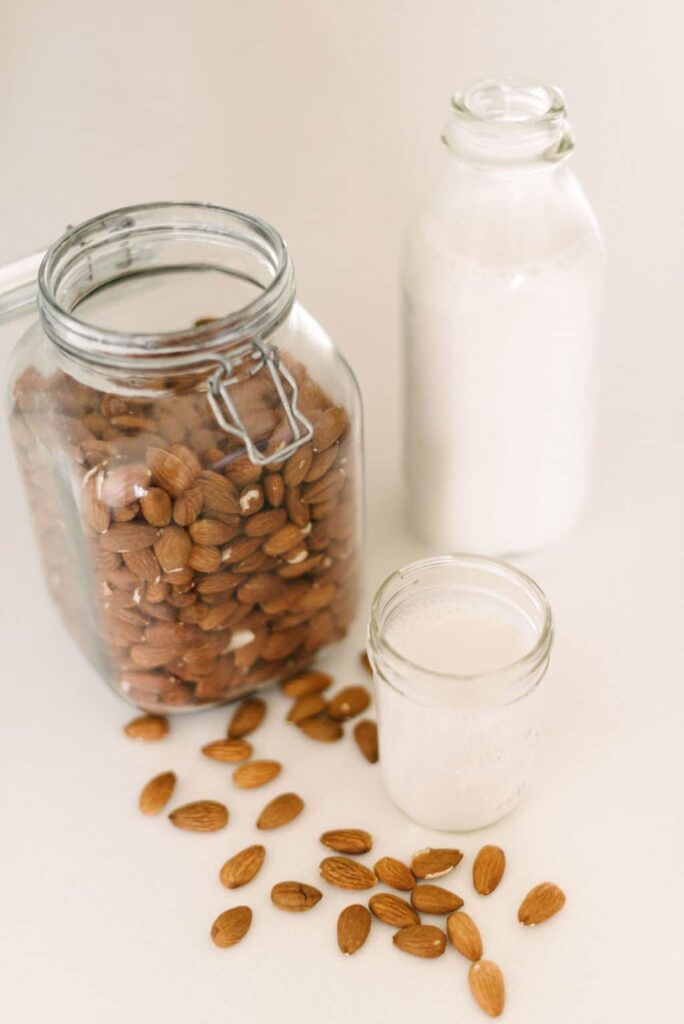

why you’ll love these almond recipes
- they current you what to do with almond pulp aside from merely composting them!
- they’re delicious, simple, and nil waste strategies to utilize your almond pulp
- there are every sweet and savory selections on this itemizing for almond recipes that match any mood
- you may decrease your bills by making your private almond milk and reusing the scraps for further recipes


what to do with almond pulp
Even if almonds are great cool, delicious, and make actually one among my favorite non-dairy milk choices, I nonetheless don’t actually really feel great good about meals waste.
Which means using that almond pulp to make one factor additional tasty. No meals scraps going to waste on my watch!
Almond pulp is so extraordinarily versatile. It’s best to use it for every kind of sweet and savory dishes, and I’m going to share my excessive 8 recipes with you. Nevertheless, sooner than we go any further, I moreover want to share a recipe for making almond milk!
FOR A TIP: Freeze a couple of of your do-it-yourself almond milk in an ice cube tray, and use these cubes for do-it-yourself lattes!


vegan cheese unfold from almond pulp:
This recipe will vary based mostly totally on how lots almond pulp you use, so I extraordinarily advocate that you just do it to model. Within the occasion you’re trying to find a visual you may need to attempt this video.
I used a generous half cup of almonds and made 5 cups of almond milk. I had a bit bit under half a cup of pulp, and these are the general measurements I used to make the dip.
- 1/2 a cup of almond pulp
- Juice of 1 medium lemon
- 2 teaspoons dietary yeast
- 1 teaspoon garlic powder
- 1 teaspoon paprika
- Salt & pepper to model
- 1-2 tablespoons of additional herbs (I personally like modern tender herbs like chives, basil, parsley, dill, and tarragon)
Mix the complete components in a bowl, then unfold on crackers or use as tasty dip!
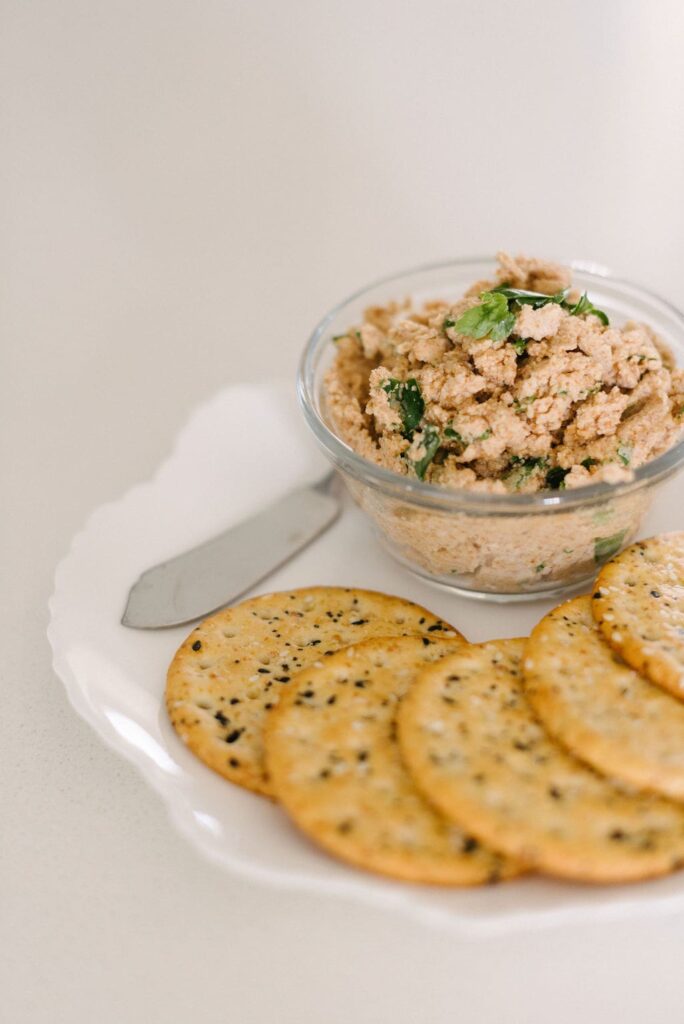

almond pulp crackers:
350F / 15 Minutes
- 1 cup of almond pulp
- 1 tablespoon of ground flax seeds
- 1 garlic clove
- ¼ cup of olive oil
- Salt & pepper
- Non-compulsory herbs (I like in order so as to add garlic powder, onion powder, and paprika)
- Combine the complete components collectively in a mixing bowl. The dough must be stiff and stick collectively when pinched. If it’s too dry, add one tablespoon of water at a time.
- Roll the cracker dough till it’s ⅛” skinny and place it on a well-greased baking sheet (this might be less complicated whenever you use compostable parchment paper)
- Cut back your dough into small squares and dock the center with a fork.
- Place the crackers into your preheated oven and bake them for quarter-hour.
- Flip the cracker onto the other facet and bake for yet another quarter-hour.
- They’re accomplished when the crackers are golden brown.
- Retailer them in an airtight container and luxuriate in!
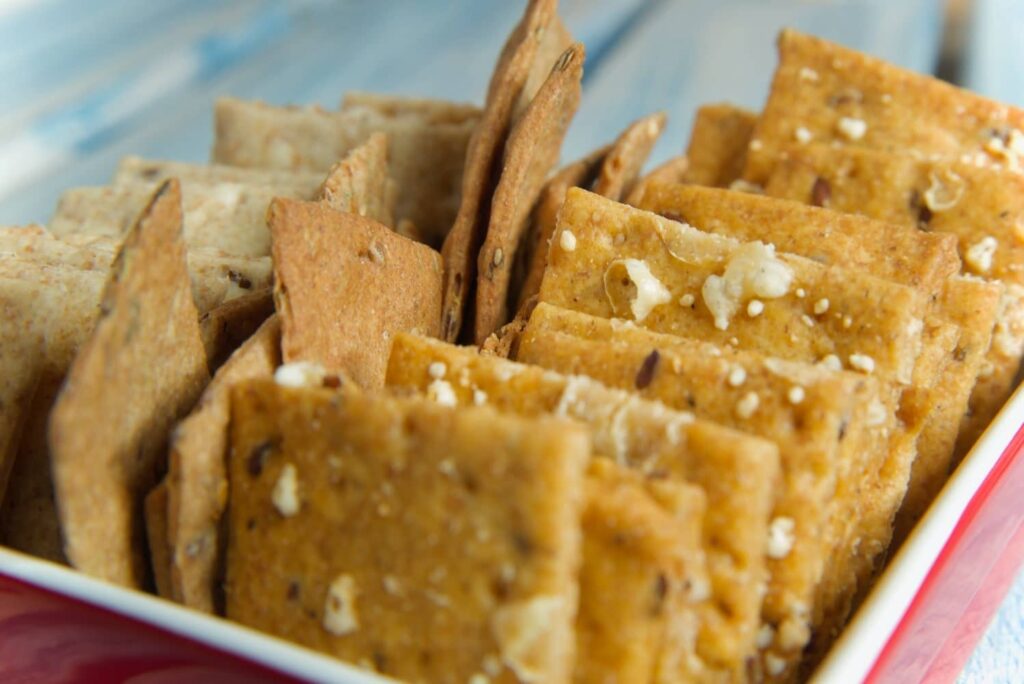

almond pulp cookies bites:
- ½ a cup of almond pulp
- 1 cup of rolled oats
- ¼ cup of ground flax seeds
- 2 tablespoons of cocoa powder
- 12 medjool dates, pitted
- 1 teaspoon of vanilla extract
- Pinch of salt
- Place the complete components in a meals processor and blend until a dough ball is original.
- Flatten to make no-bake almond pulp cookies or preserve in balls to have the benefit of as protein bites.
- Roll the dough into smaller balls and retailer in an airtight container inside the fridge.
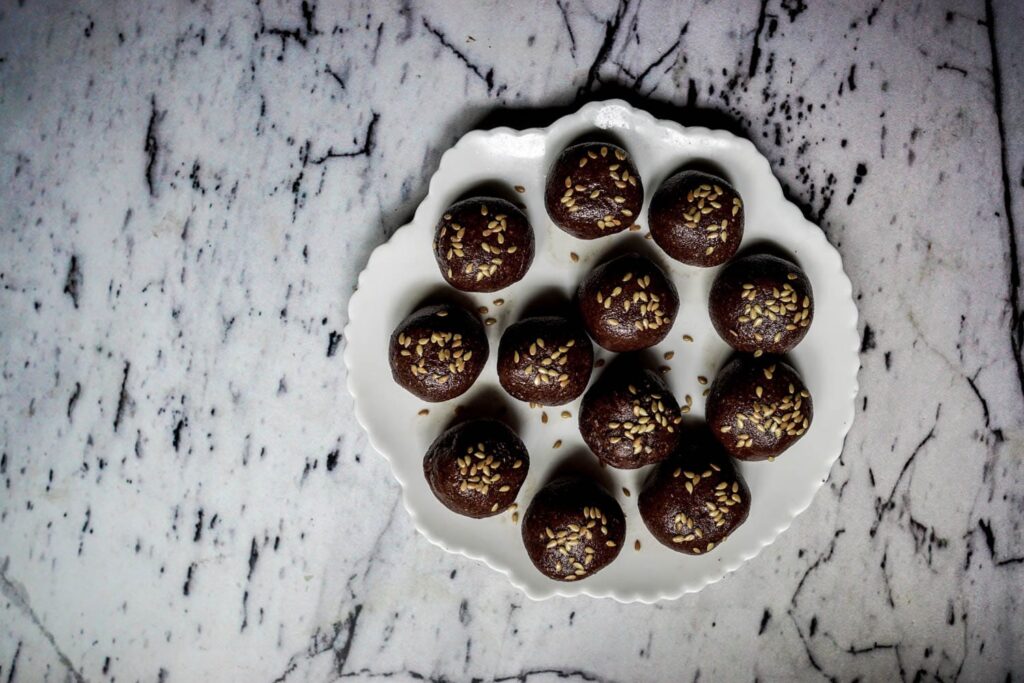

further almond pulp recipes:
faqs
Don’t almond orchards waste a ton of water?
Almonds get a foul rep referring to water utilization, nevertheless I really feel that’s a bit bit unfair on account of completely different nuts like walnuts and pistachios all use a similar amount of water to develop.
The California almond neighborhood has moreover really stepped up its water conservation. Farmers have already diminished the amount of water used to develop each almond by 33 p.c between the Nineteen Nineties and 2010s.
With improved manufacturing practices and the adoption of atmosphere pleasant micro-irrigation experience, they’re aiming to reduce it by one different 20% by 2025.
Just so we’re clear, we’re not talking about altering that water with reclaimed water or grey water — we’re talking about an whole low costand I really feel that’s pretty very good.
To put this far more into perspective, California grows 99% of the almonds purchased inside the U.S. and makes use of decrease than 8% of California’s agricultural water, whereas solely 21% of the dairy inside the U.S. comes from California nevertheless accounts for higher than 15% of agricultural water utilization inside the state.
Almonds are the clear winner referring to effectivity, greenhouse gasoline emissions, and water monetary financial savings.
can you style do-it-yourself almond milk?
Positive! I prefer to suggest doing so after you’ve got separated the milk from the pulp. Return the milk to a transparent blender and add your sweetener (akin to agave nectar or honey), any style you’d like (akin to vanilla, pumpkin spice, and plenty of others.), and blend until straightforward. Voila! Hand-crafted flavored almond milk.
is almond pulp good for you?
Fully. Making almond milk removes lots of the macronutrients from almonds. Using the pulp ensures that you just get that fiber, protein, and healthful fat. You’ll moreover get calcium, iron, magnesium, manganese, potassium, selenium, vitamin E, and zinc from using the leftover pulp.
I want to give an infinite shout out and because of the Almond Board of California for sponsoring this put up! I hope that you just found a yummy, new recipe to try.
Let me know whenever you’ve received any go-to almond recipes inside the suggestions down beneath!
